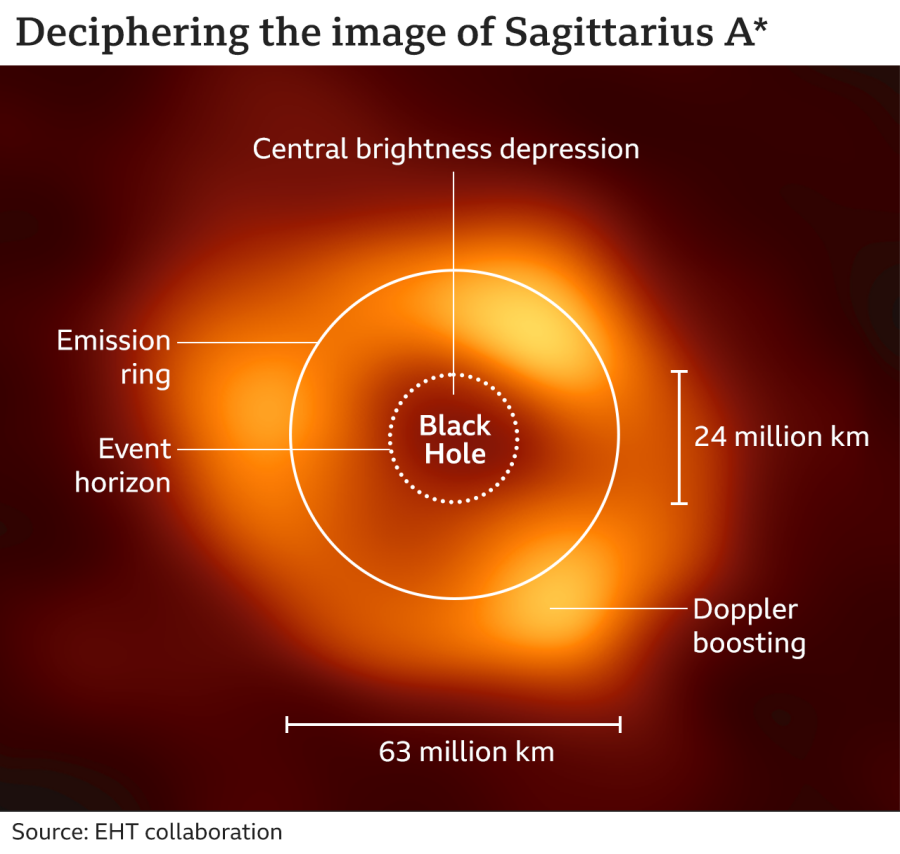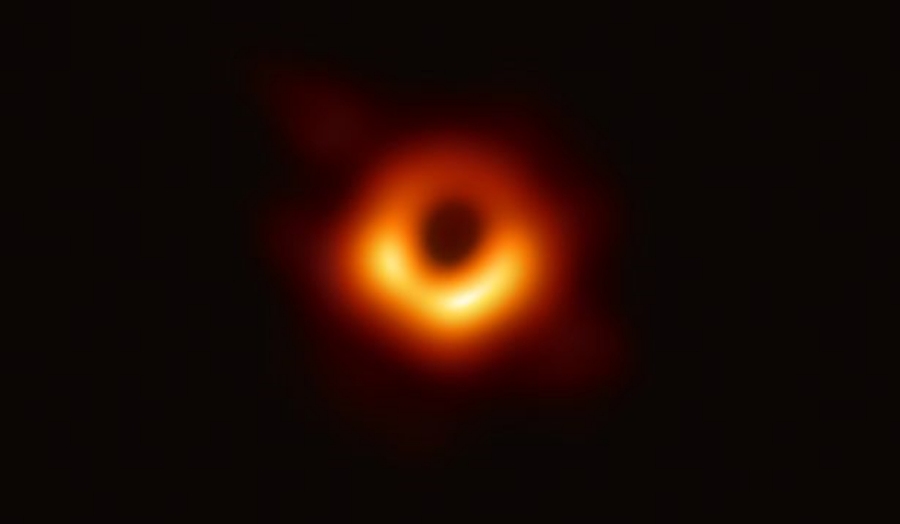Fri 13 May 2022:
Astronomers have discovered the existence of a supermassive black hole in the center of our galaxy, in what could be considered the astronomical discovery of the century.
The image of this black hole was released simultaneously at six news conferences around the world. The image appears to be a lumpy doughnut-like shape that is out of focus at first glance. It has, however, delivered the first visible confirmation of a black hole four million times the mass of the sun.
Because of the pitch-black darkness, we can’t see the big object in the shot. However, luminous gas can be seen all around it, showing a distinct signature: a dark center region known as a shadow, surrounded by a light ring-like structure.
Scientists had previously observed stars orbiting something invisible and big at the Milky Way’s center, but this is the first proof they have received.
The object is approximately 27,000 light-years from our planet.
The Event Horizon Telescope or EHT Collaboration used observations from a worldwide network of radio telescopes to create an image for this black hole designated Sagittarius A* or Sgr A* (pronounced “sadge-ay-star”).

“We were stunned by how well the size of the ring agreed with predictions from Einstein’s Theory of General Relativity,” says Geoffrey Bower of the Institute of Astronomy and Astrophysics, Academia Sinica, Taipei, an EHT Project Scientist.

The mass of a black hole determines the size of its accretion disc, or emission ring. The hole lives in the central brightness depression. Its “surface” is called the event horizon, the boundary inside which even a light-ray is bent back on itself by the curvature in space-time. Brighter regions in the accretion disc are where light gains energy as it moves towards us, and is said to be doppler boosted
“These unprecedented observations have greatly improved our understanding of what happens at the very center of our galaxy and offer new insights on how these giant black holes interact with their surroundings.”
Astronomers will be studying in unprecedented detail the behaviour and the physics of hundreds of stars whipping around the black hole. They’ll even be looking to see if there are some star-sized black holes in the region, and for evidence of concentrated clumps of invisible, or dark, matter.
“Every time we get a new facility that can take a sharper image of the Universe, we do our best to train it on the galactic centre, and we inevitably learn something fantastic,” said Dr Jessica Lu, the assistant professor from the University of California, Berkeley, US, who will lead the Webb campaign.
NEWS AGENCIES
___________________________________________________________________________________________________________________________________________
FOLLOW INDEPENDENT PRESS:
TWITTER (CLICK HERE)
https://twitter.com/IpIndependent
FACEBOOK (CLICK HERE)
https://web.facebook.com/ipindependent
Think your friends would be interested? Share this story!





